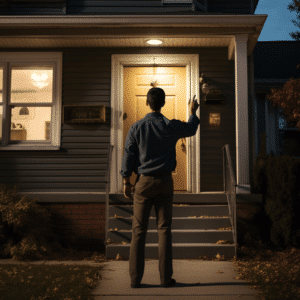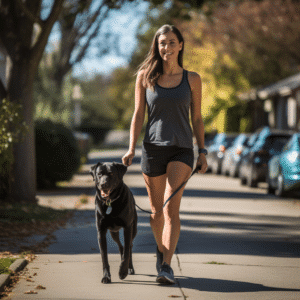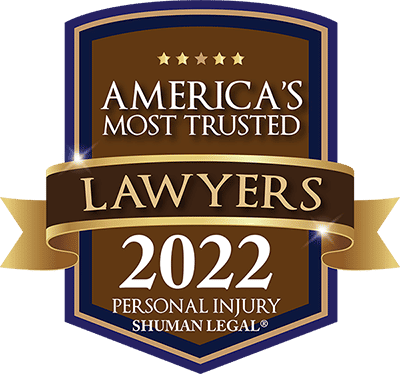
Did you know that “Beware of Dog” signs may not fully protect dog owners from liability in dog bite cases? As a dog owner or a potential dog bite victim, it’s essential to understand the ins and outs of dog bite laws and how they vary across different states. In this article, we’ll dive deep into Illinois State’s “beware of dog sign law”, discussing the impact of “Beware of Dog” signs, the role of trespassing, alternative signage options, tips for dog owners, and legal steps for dog bite victims. Get ready to become well-versed in the world of dog bite liability!
Your search for help ends here. Let’s get started, for FREE.
The Impact of “Beware of Dog” Signs on Owner Liability
A common belief is that posting a “Beware of Dog” sign on your property might shield you from legal responsibility should your dog bite someone. Unfortunately, this isn’t always the case. The effectiveness of these signs in protecting owners from liability hinges on state laws and individual circumstances.
In some states, such as California, the sign offers limited protection against dog attacks, while in Illinois, it may serve as a defense that reduces an owner’s liability if they can provide evidence. Trespassing also plays a role in dog bite cases, as displaying a “Beware of Dog” sign can limit the protection scope for intruders.
However, the sign should not be misconstrued as absolution of ownership liability if the dog causes harm to others, regardless of whether it is on or off the owner’s property.
Strict Liability States vs. Negligence States
When it comes to dog bite laws, states can be categorized as either strict liability states or negligence states. In strict liability states, dog owners are held accountable for any damage caused by their dogs, regardless of whether they were aware of the dog’s potential for harm. For example, California operates under the legal concept of “strict liability,” holding dog owners liable for any dog bites even if the dog hasn’t shown prior aggressive behavior or bitten someone before.
On the other hand, negligence states require evidence of the owner’s negligence or knowledge of the dog’s potential for harm on the owner’s private property. In these jurisdictions, the owner is liable if the dog is known to have had aggressive tendencies or had previously inflicted a bite on someone. Cases in strict liability states may involve a drawn-out legal process, potentially leading to financial hardships for the dog owner.
Effectiveness of “Beware of Dog” Signs as a Legal Defense
The effectiveness of “Beware of Dog” signs as a legal defense is contingent upon the state’s dog bite laws and the particulars of the case. For instance, displaying a “Beware of Dog” sign in Illinois does not negate the liability of the dog owner. Similarly, in Nebraska, displaying a “Beware of Dog” sign will not provide dog owners with liability protection in most instances.
In California, the presence of a “beware of dog” sign near the scene of a dog attack generally does not negate the rule of strict liability. This means that even with a sign on display, dog owners may still be held accountable for any injuries caused by their dogs. It’s crucial for dog owners to be aware of their state’s specific dog bite laws to understand their potential liability.
The Role of Trespassing in Dog Bite Cases
Trespassing plays a significant role in dog bite cases, as owners may not be held liable for bites that occur when someone is present on their property without authorization. However, the protection scope for intruders is limited, as trespassing is a criminal offense and may lead to the provocation of the dog, which the sign warned of.
In California, for example, owners may not be held liable for bites that occur when someone is unlawfully on their property. In Nebraska, trespassers may be entitled to recover for dog bite injuries if they can demonstrate that the dog owner was aware of the animal’s aggressive propensities, such as if the dog had previously bitten somebody.
Injured by an Aggressive Dog?
Invited Guests vs. Uninvited Intruders
 An “invited guest,” in the context of property and dog bite laws, is a person who has been expressly invited by the property owner to enter their property for a lawful purpose. The property owner is responsible for providing reasonable care to invited guests and may be held liable for any injuries caused by their dog to the invited guest. Conversely, uninvited intruders may be limited in their right to compensation from the dog owner, depending on the jurisdiction.
An “invited guest,” in the context of property and dog bite laws, is a person who has been expressly invited by the property owner to enter their property for a lawful purpose. The property owner is responsible for providing reasonable care to invited guests and may be held liable for any injuries caused by their dog to the invited guest. Conversely, uninvited intruders may be limited in their right to compensation from the dog owner, depending on the jurisdiction.
Approximately 36 states have strict liability laws for dog bites, meaning that the owner is responsible for any injuries caused by their dogs, with no regard to whether the person bitten was an invited guest or an uninvited intruder. However, the specifics and exceptions of these laws might differ from state to state.
A court ruling in Rath v. City of Seattle demonstrated the significance of the legal distinction between invited guests and uninvited intruders in dog bite lawsuit outcomes. The plaintiff, who was trespassing at the time of the incident, could not hold the dog owner liable for the dog bite. This case emphasizes the importance of the distinction between invited guests and uninvited intruders in determining liability in dog bite lawsuits.
Children and Delivery Workers
Children and delivery workers may have special protections under the law, as they may not fully understand the implications of a “Beware of Dog” sign or have implied permission to enter the property. In states with strict dog bite liability laws, there are no specific protections for children. However, these laws generally hold dog owners liable for any injuries caused by their dogs, regardless of the victim’s age.
In California, for example, delivery workers have implied authorization to enter a property, and a “Beware of Dog” sign would not be legally binding in a case involving a child victim. Dog owners must take into account potential legal implications for children and delivery workers when they put up warning signs on their property.
Alternative Signage Options for Dog Owners
While “Beware of Dog” signs may not provide full legal protection for dog owners, alternative signage options, such as “No Trespassing” signs or neutral wording like “Dog on Property,” may offer better legal protection. These alternative signs could help establish that a person was unlawfully on the property or more effectively warn visitors of potential danger without implying that the dog is aggressive or dangerous.
“No Trespassing” Signs
“No Trespassing” signs can help dog owners establish that a person was unlawfully on their property, potentially reducing their liability in a dog bite case. These signs can serve to deter potential intruders and help protect the dog owner from liability if a trespasser is bitten. Dog owners must make sure their “No Trespassing” signs are easily visible and prominently positioned in areas where trespassers are likely to encounter them.
Despite the presence of “No Trespassing” signs on a dog owner’s property, dog owners still have the responsibility to take reasonable precautions to restrain their dogs and could be held liable for any bites or attacks occurring on their premises. Reducing liability hinges on adhering to proper confinement and leash laws, as well as ensuring adequate training and socialization. Dog owner’s homeowners insurance can play a role in providing coverage for such incidents.
Neutral Wording and Direct Language
Using neutral wording and direct language in dog warning signs may be less ambiguous and more effective in warning visitors of potential danger. Examples of neutral wording and direct language in dog warning signs include “Dog on Premises,” “Guard Dog on Duty,” and “Security Camera in use”. Studies have shown that unambiguous and direct language assists in informing individuals about potential risks and encourages safe behavior.
In addition, employing neutral wording can be beneficial in legal defense, as it ensures that the information is comprehensible and not misconstrued. Utilizing neutral wording and direct language in warning signs is an effective approach to communicate potential hazards to visitors, regardless of their familiarity with dogs or understanding of the implications of a “Beware of Dog” sign.
Tips for Dog Owners to Minimize Liability
By ensuring proper confinement, following leash laws, and providing adequate training and socialization for their dogs, dog owners can minimize their liability in dog bite cases.
Let’s explore these tips in more detail.
Proper Confinement and Leash Laws
Proper confinement and adherence to leash laws can help prevent dog bites and demonstrate responsible ownership. A dangerous dog should always be kept in a secure environment at all times. This could either be indoors or in a locked pen, which is built in a way that stops young children from entering and the dog from escaping.
It’s crucial for dog owners to be aware of their state’s specific leash laws, as they vary by state. For instance, Michigan and Pennsylvania require dogs to be under the control of their owners when off their premises. Adhering to these laws can help demonstrate responsible ownership and reduce the likelihood of dog bites.
Furthermore, proper confinement allows owners to control the dog’s interactions and provide appropriate supervision, thereby reducing the risk of bites. This can help dog owners minimize their liability in dog bite cases and ensure the safety of both the dog and the surrounding community.
Training and Socialization
 To minimize the owner’s liability, training and socialization are vital as they reduce the chances of a dog becoming aggressive or dangerous. Dogs that are provided with adequate socialization during their puppyhood are significantly less likely to bite.
To minimize the owner’s liability, training and socialization are vital as they reduce the chances of a dog becoming aggressive or dangerous. Dogs that are provided with adequate socialization during their puppyhood are significantly less likely to bite.
To curb aggression, dog owners should:
- Engage the services of a professional trainer who specializes in aggressive dog training
- Utilize positive reinforcement and reward-based training methods
- Spay or neuter their dogs
- Avoid punishment as it can exacerbate aggression and have an adverse effect on their dog’s behavior
Starting socialization and training early, between 3-14 weeks of age, can help prevent aggressive behavior.
Suffered a Dog Bite?
Legal Steps for Dog Bite Victims
If you or a loved one has suffered a dog bite, knowing the legal steps to take is crucial to secure the compensation you deserve. Let’s explore the crucial steps to take following a dog bite incident.
Seeking Medical Attention
Seeking medical attention is crucial for the victim’s health and can provide important documentation for a potential lawsuit. According to the Merck Manual, victims of dog bites should promptly seek medical attention following the incident. Washing the wound with soap and water, assessing the wound, and seeking medical care without delay are important steps to take following a dog bite.
In addition to ensuring the victim’s health, seeking medical attention for a dog bite injury can provide a record of the injury and its treatment, which can be used as evidence to support the case and illustrate the gravity of the bite. Be sure to share all relevant information with healthcare providers, including an accurate description of the injury, any symptoms or signs of infection, and information about the dog and its owner if known.
Documenting Evidence
Documenting evidence, such as:
- Photographs of injuries and the location of the incident
- Witness accounts
- Medical records and bills
- Police reports
- Government agency reports
- Witness statements
- Clothing worn during the incident
- DNA evidence from the suspected dogs involved
can strengthen a victim’s case.
It’s also important for dog bite victims to document their expenses incurred during the process of filing a dog bite injury claim, including medical appointments, medications, treatments, and lost wages. Preserving evidence of torn or bloody clothing is crucial as well; take photographs of the clothing, maintain it in its current state without washing or modifying it, and store it in a secure container.
Consult with a Skilled Attorney
Consulting with a skilled attorney can help victims navigate the legal process and maximize their chances of receiving fair compensation. An attorney can:
- Assess the full cost of the damages and losses incurred
- Negotiate with insurance companies
- Incorporate all applicable factors into the settlement
- Provide counsel on the most appropriate course of action to maximize the compensation in a dog bite case.
In addition to providing guidance throughout the legal process, a skilled attorney can safeguard your rights, negotiate an equitable settlement with the insurance company, and represent you in court if needed. If a dog bite has caused injury to you or a loved one, consulting with a knowledgeable personal injury attorney is key in securing the compensation you are entitled to.
Frequently Asked Questions
Is it a good idea to put up a Beware of Dog sign?
Posting a ‘Beware of Dog’ sign may not protect an owner from liability if a person is attacked by the dog, even if they lawfully visit the property. Furthermore, the sign could be seen as an admission of the dog’s dangerous or aggressive nature, leading to greater consequences for the owner.
Do you need a Beware of Dog sign in Illinois?
It is advisable to display a “Beware of Dog” sign in Illinois if the dog is visible or there is a warning sign present, as failing to do so could result in a trespasser being unable to recover damages if attacked by the dog.
Does Beware of Dog sign protect you from a lawsuit?
Although you may think a “Beware of Dog” sign will protect you from liability if your dog causes injury, this is not the case. Owners are liable for any injuries or damages their animals cause, regardless of negligence, so it is important to take additional steps to restrain your dog and keep them from harming others.











